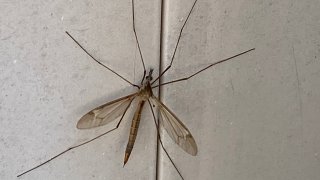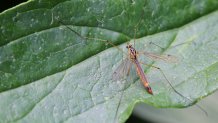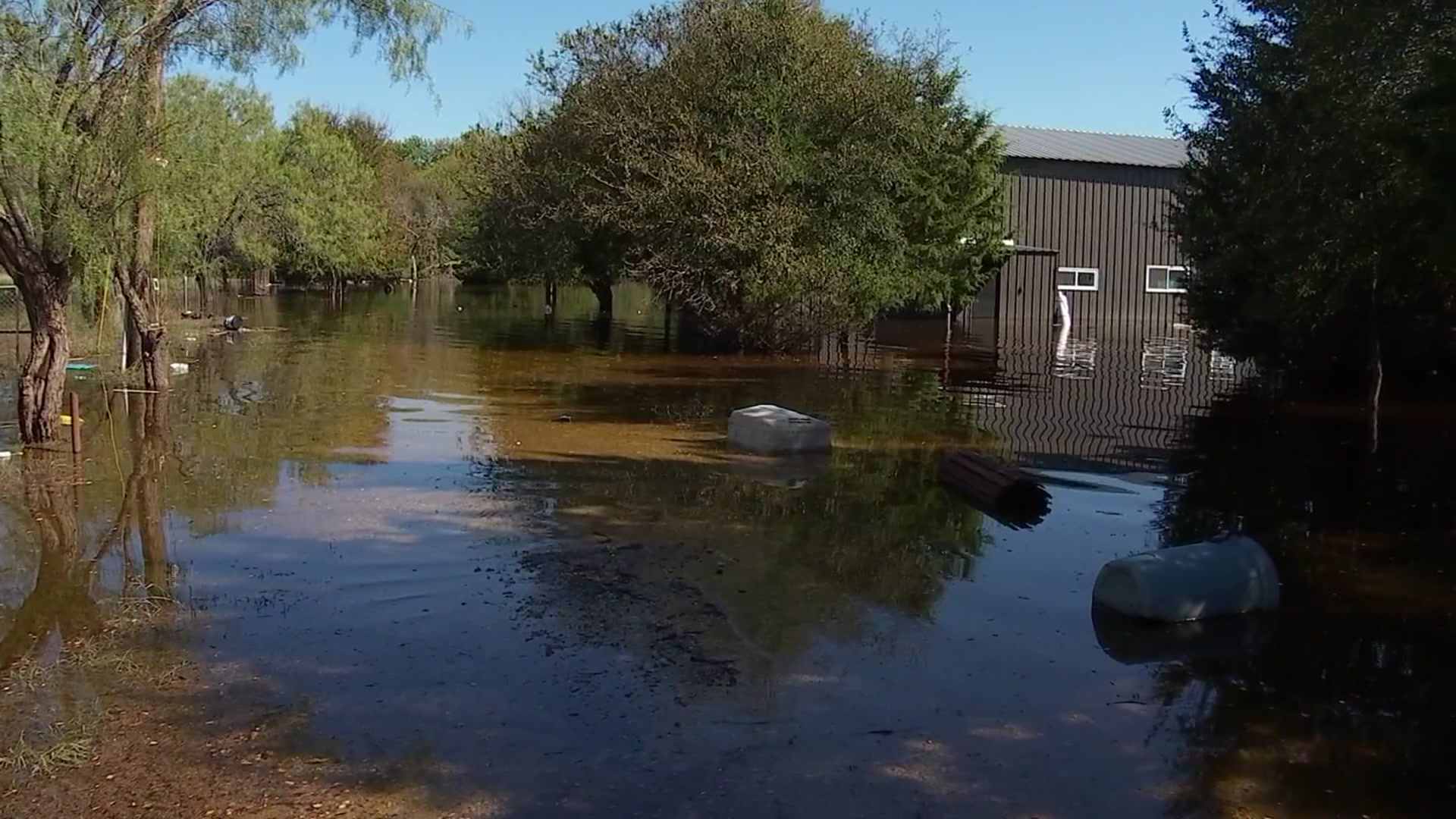
It's spring in Texas and that means baseball, bluebonnets and unfortunately, bugs.
Incorrectly referred to as mosquitoes, these large flies appear in droves in early spring but the long-legged crane flies don’t actually eat mosquitoes or bite humans.
Crane flies, commonly known as mosquito hawks or even skeeter eaters, have already emerged in droves this spring. Despite their creepy mosquito-like appearance, crane flies are completely benign.
WHAT ARE CRANE FLIES?
Get DFW local news, weather forecasts and entertainment stories to your inbox. Sign up for NBC DFW newsletters.
Crane flies make up a large family – Tipulidae – in the order Diptera, or true flies, and as such, they're related to other true flies, like mosquitoes and robber flies. Luckily for us, though, they don't bite!
Crane flies are most apparent each year in Texas during the late winter/early spring and are usually one of the first signs that spring is nearly upon us. They are among the gentlest of insects. Some are nectar feeders, sipping sweet sugars from plants and possibly helping out a little with pollination in the process.
The insects tend to thrive in warmer climates like Texas and Florida. This spring, a mild winter followed by a wet spring helped produce a bumper crop, but the recent cold snap could soon bring that to an end. The flies tend to return in the fall as temperatures drop, as well.

As adults, crane flies have very short lives, generally one week or two. According to the University of Arizona, most crane flies species only mature into adulthood, mate, and then die. Much of their lifespan is in the larval stage, where they can be found in moist soils, typically feeding on decaying organic matter. As larvae, crane flies are fairly protected from the elements and can live for upwards of three years in this stage.
Local
The latest news from around North Texas.
ARE CRANE FLIES HARMFUL?
Bryant McDowell, an extension program specialist for Texas A&M AgriLife, jokingly refers to them as the Texas groundhog, a sign that warmer weather is on the way.
“There’s no need to fear,” said McDowell, who specializes in urban pest management. “These insects are completely harmless and quite fragile.”
The adults, like many insects, are attracted to lights and so they end up on our front porches at night and fly into the house when doors and windows are open. But they don't cause any harm and don't carry any diseases.
Crane flies are clumsy fliers, McDowell said, possibly explaining why they emerge when there are few other natural predators around.
“I think of them as the robot vacuums of the insect world,” he said. “They fly around until they hit something and then go off in a different direction.”
Many people see crane flies and perhaps think that the mosquitoes are coming out larger and earlier every year. But crane flies are generally active before our pest mosquitoes. Crane flies can be distinguished from mosquitoes by their larger size; but also by their wings, which lack the scales found on mosquito wings. While crane flies might not reduce the mosquito population, they do serve as a food source for frogs, swallows, armadillos and other insectivores.
To keep them outdoors, McDowell suggested ensuring window screens are in good condition and eliminating gaps in doors and windows.
If they do dart inside, McDowell advised, simply scoop them up and place them back outdoors. Repeat as necessary.
The Dallas Morning News contributed to this report.



